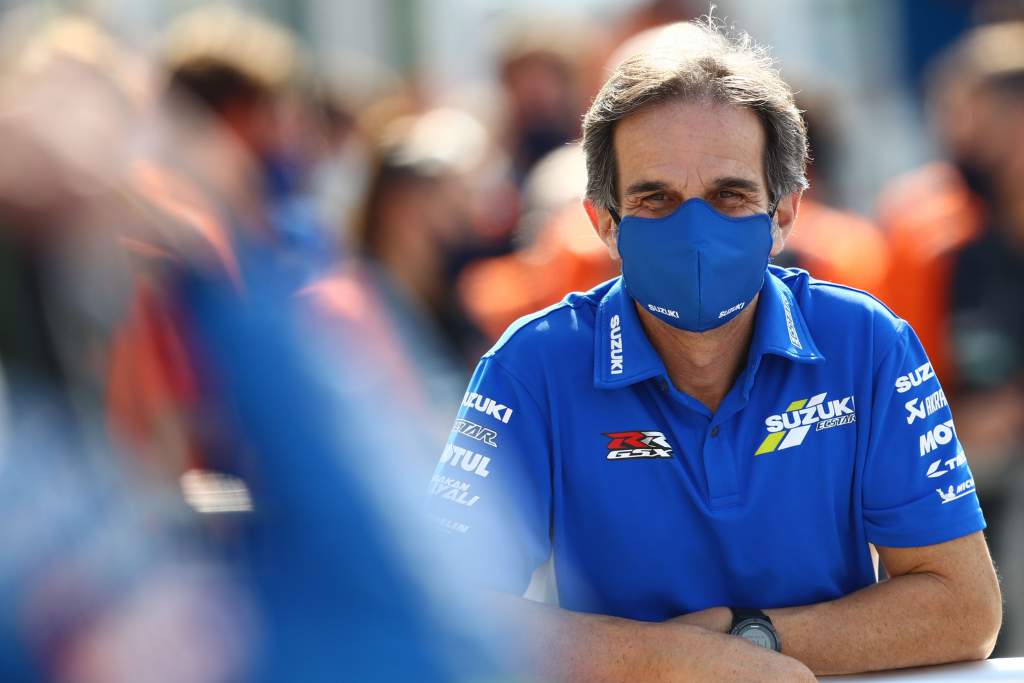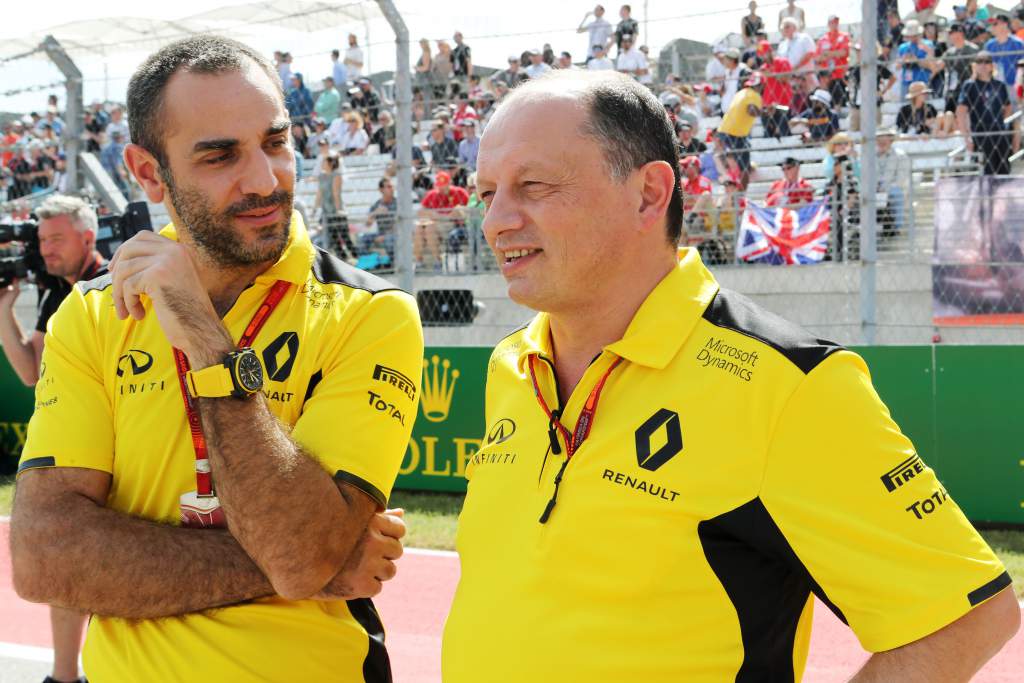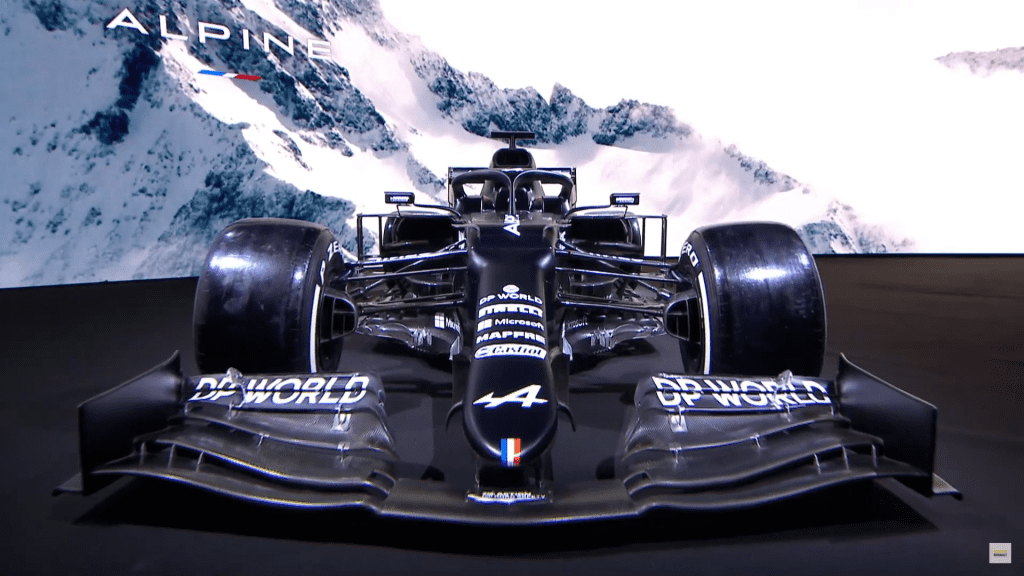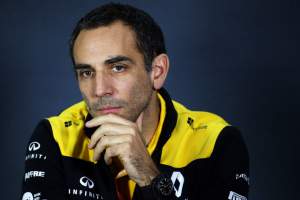Up Next

“Interim” is the polite way to describe the beginning of the Alpine Formula 1 era, which has some significant absentees with less than two months before 2021 pre-season testing begins.
Alpine F1 has not been unveiled in full – that comes next month – but the rebrand has started. Its work-in-progress livery was shown off as part of a major Groupe Renault strategic presentation on Thursday morning, and its commitment to F1 was reiterated.
Motorsport will be a key part of Renault’s plan for the revived Alpine brand, hence the F1 team’s makeover.
As this has been presented as a cornerstone of the strategy, the team’s official accounts have been changed over from Renault to Alpine, and this initial livery marks the first sign of Alpine’s new identity, we must consider the era as under way. Yet some major details are still missing.

Alpine’s F1 team appears to be without a leader, two months before the start of the season. The man who was in charge, Cyril Abiteboul, has left Renault. This was announced in a corporate communication last week but has not been acknowledged by the F1 operation. And it was not addressed on Thursday.
In fact, nothing detailed about the F1 team was divulged. All that was new is that the Alpine portion of Renault’s presentation was led by new CEO Laurent Rossi.
That means the expected appointment of Davide Brivio, who was widely believed to be Alpine F1’s incoming CEO, remains unconfirmed. His announcement was understood to be planned for shortly after his exit from the Suzuki MotoGP team was confirmed. But Alpine said nothing of Brivio then and is saying nothing now. No further news is expected from the team today either.

Compare that to the start of the Aston Martin era at the former Racing Point team, which has unveiled a new title sponsor, has complete
continuity from last year, and started a swift rebranding exercise in the early days of January, and the difference is startling.
At this stage there are still more questions than answers. Who will lead the team? Is Brivio joining after all, and in the role (a team-specific executive) that was expected? What impact has Abiteboul’s departure had on the plan? Was it so unexpected that there’s no succession plan? And why hasn’t his exit even been acknowledged?
It’s hard to imagine this kind of silence and uncertainty if Toto Wolff departed Mercedes or Christian Horner left Red Bull. In fact, any team losing its team principal would at least be recognised. That just lends further weight to the feeling a curveball has been thrown within the organisation.
Such confusion may also go some way to explaining why Alpine’s supposedly very important F1 team was hardly front-and-centre as Renault presented the Renaulution, and why there were no F1 questions in the subsequent Q&A with analysts.
There may be more coherency behind-the-scenes. It would be alarming if there isn’t. If Alpine was a brand-new F1 team then having uncertainties at the turn of the year would be less of a concern in some ways. But the fact this is a well-established organisation going through such peculiar motions risks repeating something of a classic Renault error.
In recent years the manufacturer has spent time getting everything aligned, things progress nicely, and then something triggers a setback.

A few years ago Fred Vasseur lasted just one season at Renault because of the confusing and confrontational leadership structure. He was never replaced directly as ‘racing director’ as managing director Abiteboul absorbed the team principal role, which indicated the team/company knew the combination of those two positions was not working.
But when Marcin Budkowski arrived in early 2018 as executive director, a non-technical role with wider management responsibility, he joined what still seemed like a bloated leadership structure.
Abiteboul was still the man in overall charge with Budkowski moving into a role ostensibly acting as a middleman between factory and trackside, perhaps akin to a sporting director – but that role has been held for a long time by Alan Permane. Then there were the technical chiefs, one for the engine, one for the chassis, and one overarching chief technical officer.
That has been in the process of settling down for a while, and things are becoming a bit more joined up. CTO Bob Bell moved into an advisory role in 2018, and over the last 18 months Budkowski seems to have completed an exhaustive behind-the-scenes job integrating the expanding Enstone facility’s various departments.
The prospect of Abiteboul moving into a role that focused on building Alpine’s corporate structure rather than trying to wear two hats and harming the F1 team seemed eminently sensible. There was (and remains) justified optimism that Alpine’s era could hit the ground running.
Yet now with the Renault-to-Alpine transition comes a leadership reshuffle we know nothing about. Abiteboul has left Renault entirely, Brivio was expected to join yet something is holding that up, and Budkowski’s position is in an undetermined state as a result.

With new regulations just 12 months away, Alpine cannot really afford to be spending any time now trying to work out who is in charge, and of what. That would be repeating old Renault mistakes and shooting itself in the foot. Mercedes might not have Lewis Hamilton locked down on a new contract yet but the people running the team and building the cars know what their structure is. The same goes for Red Bull and for Alpine’s many midfield rivals.
To recap: the news is there is no news. Alpine hasn’t addressed the departure of its team principal from the parent company, there is no official indication of his replacement, and a major new arrival is now shrouded in confusion – all despite a major new strategy for Renault being revealed and Alpine’s F1 team being presented as an important part of it.
Much of what Renault communicated was in the vein of ‘this is ready to be actioned’ but Alpine’s F1 team seems to have suffered something of a false start. How it progresses from here will go a long way to defining the programme’s success.
Will it have the leadership structure Renault seemed to lack for a while? Or is the team just repeating the cycle of its potential being constrained by other factors?
Add those to the many questions to be answered as F1’s newest era begins.






